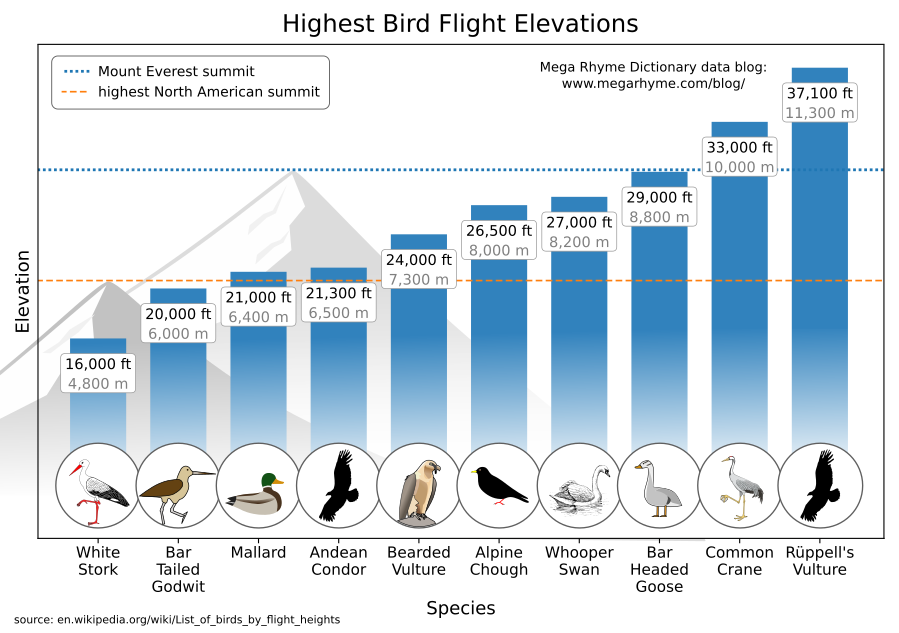Birds can fly at various altitudes depending on their species, size, and migration patterns. Some birds fly close to the ground, while others soar to incredibly high altitudes. The highest flying bird ever recorded is the Rüppell's vulture, which can fly at an altitude of up to 37,000 feet (11,000 meters) above sea level. This species of vulture is known to soar at great heights in search of carrion and has been observed flying above Mount Everest, the highest mountain in the world.
Other high-flying birds include bar-headed geese, which migrate over the Himalayas and have been recorded flying at altitudes of over 29,000 feet (8,800 meters), and common cranes, which have been observed flying at altitudes of up to 33,000 feet (10,000 meters) during migration.
Below is a visualization created by Reddit user OfficialWireGrind shows the maximum bird flight elevation by species compared to Mount Everest.
However, it's worth noting that most birds fly at lower altitudes, typically below 5,000 feet (1,500 meters). Some birds, such as sparrows and pigeons, fly even lower, often staying within a few hundred feet of the ground.

This post may contain affiliate links. As an Amazon Associate, I earn from qualifying purchases.
Comments
Post a Comment